Tessa’s Recipe Rundown
TASTE: So rich and tasty, with a tiny hint of sweetness.
TEXTURE: Paradoxically light and fluffy AND rich, with a slightly crusty exterior.
EASE: This dough takes about 10 minutes to come together and is on the sticky side, but follow the recipe exactly, and you’ll be enjoying these buns in no time.
PROS: 1,000 times better than any store-bought burger bun.
CONS: Dough is a little sticky, which can be challenging to work with – but follow my instructions and you’ll be good to go.
WOULD I MAKE THIS AGAIN? I’ve made this recipe many times!
This post may contain affiliate links. Read our disclosure policy.
I have had a longtime obsession with these Burger Buns. Be warned: once you make these you’ll never want store-bought buns again.
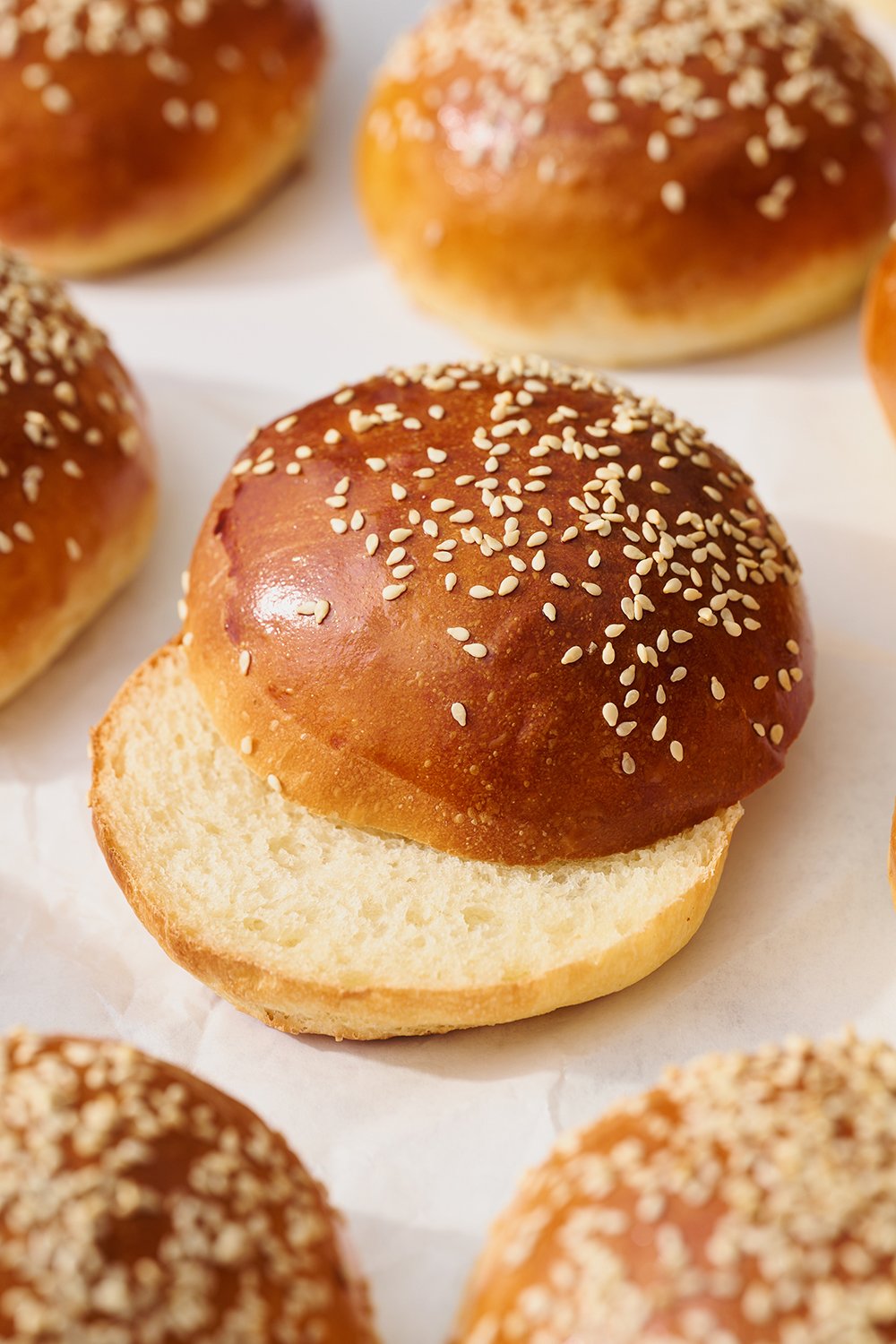
They’re the perfect way to elevate your burger game. Your summer cookouts will never be the same.
These homemade hamburger buns feature a light brioche base, which makes them incredibly fluffy yet rich, and a little crusty on the outside. They’re soft yet sturdy enough to contain even the juiciest burger or any sandwich.

Below, I’m sharing all my tips and tricks for how to make my homemade hamburger bun recipe, which will seriously wow anyone who comes to your next summer BBQ.
Get ready to enjoy the best burgers of your life!

How to Make Homemade Burger Buns from Scratch
Ingredients for Hamburger Buns
- Warm milk – Whole milk, for best results. Between 105° and 120°F is perfect. The milk enriches this dough for a softer, fluffier texture.
- Warm water – Also at around 105° and 120°F. Too hot and it will kill the yeast; too cold and it will take forever to rise.
- Instant yeast – I prefer to use instant yeast, but active dry yeast will work too. More on this below.
- Sugar – Just a little, to bring some moisture to the buns and to help with browning, so please don’t skip the sugar.
- Egg – One large egg, about 56 grams in shell, at room temperature. Like the milk, the egg enriches the dough to make the buns rich, tender, and soft. You will need an additional egg for the egg wash.
- Bread flour + All-purpose flour– Measured correctly, preferably using a digital scale. It’s important to use bread flour and all-purpose flour for this recipe. More on this below.
- Salt – I prefer to use fine sea salt because I prefer the flavor, but table salt works just fine. The amount of salt used doesn’t make this bread salty, it instead lifts all the other flavors, making for a well-rounded flavor profile. Learn more about the differences between types of salt here.
- Butter – Used to add moisture and flavor, resulting in a slightly buttery and rich yet light and fluffy texture. Always use unsalted butter in baking.
- Sesame seeds – To top the rolls with. Optional, but I love them! You can use poppy seeds, everything bagel seasoning, or leave them plain – totally up to you.
Overview of Instructions – How to Make Homemade Hamburger Buns
- Combine the first few ingredients. In the bowl of a stand mixer fitted with the dough hook, combine the milk, water, yeast, sugar, and egg.
- Add the flour. Mix until incorporated.
- Mix in the salt and butter. Knead on medium-low speed for about 10 minutes, or until the dough comes together into a soft yet tacky dough (should not be unbearably sticky). Avoid adding too much extra flour because it will create tough buns. It’s better to be sticky at this step, I promise!
- Allow to rise. Transfer the dough to a lightly oiled bowl. Cover with plastic wrap and let rise in a warm place until doubled in size, about 1 to 2 hours. Note that enriched dough will take a little longer to rise than dough made without butter, milk, or eggs.
- Prepare the pans. Line two baking sheets with parchment paper or silicone baking mats.
- Divide the dough and shape the buns. Divide the dough into 8 equal parts. Gently roll each portion of dough into a ball and place on a parchment paper-lined baking sheet, 2 to 3 inches apart.
- Allow to rise again. Cover with a clean towel and let rise again until puffy and almost doubled, 1 to 1 1/2 hours.
- Egg wash the burger buns. Brush the tops of the buns lightly with the egg wash. This will encourage a deeply golden shiny exterior and provide a glue for the sesame seeds to stick to. Sprinkle with sesame seeds.
- Bake. Bake at 400°F for about 15 minutes, rotating halfway through baking, until the tops are golden brown. Transfer to a rack to cool completely before slicing, topping, and serving.
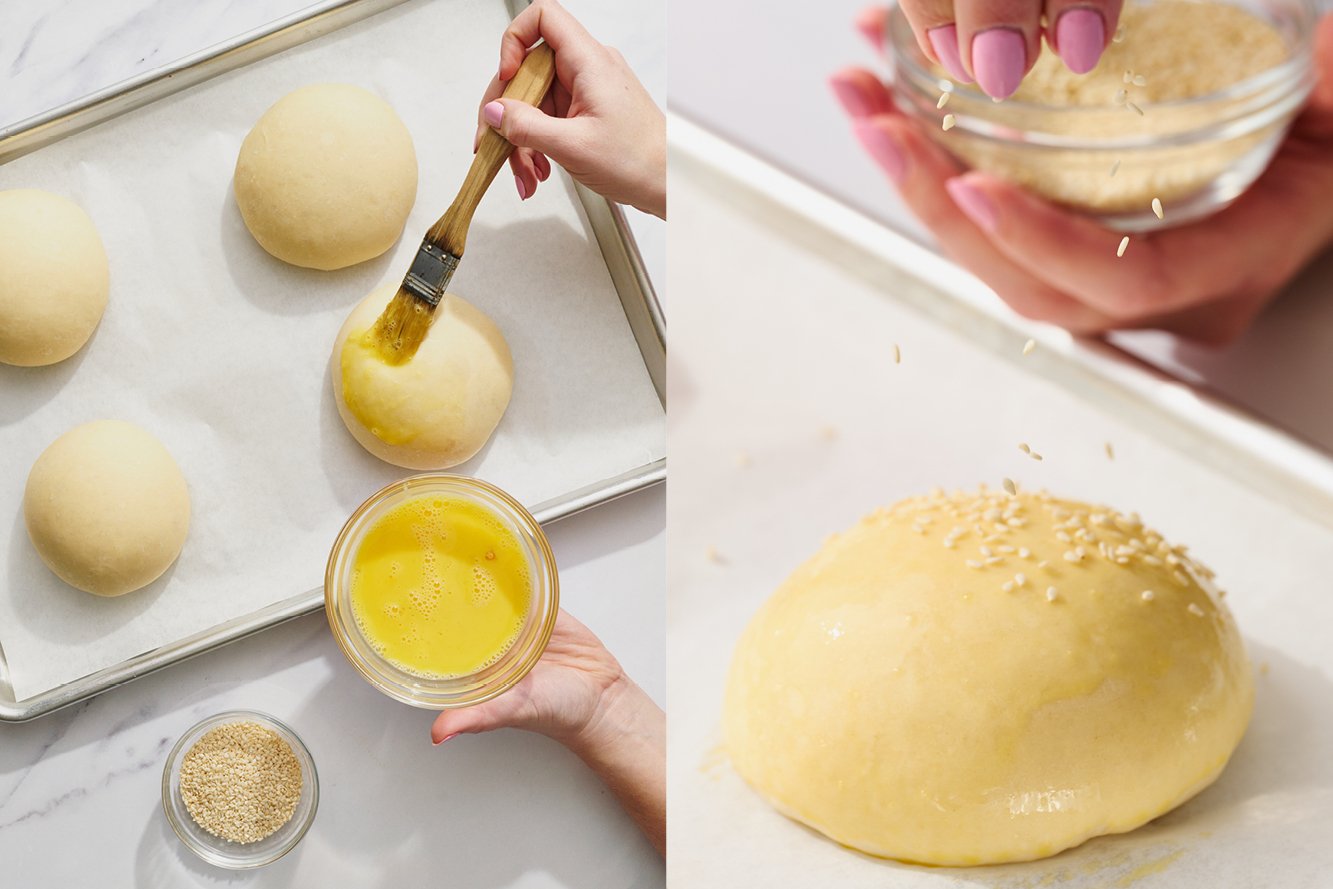
Which Yeast Is Best to Use For Burger Buns?
Instant yeast, also called rapid rise or quick rise yeast, helps these buns rise faster. You can buy my favorite yeast on Amazon. This type of yeast is specifically formulated to allow you to skip proofing (the step where you combine the yeast with warm liquid and allow it to sit for a few minutes until it becomes bubbly). Instant yeast can be directly added in with all of the other ingredients.
How Can I Use Active Dry Yeast Instead Of Instant Yeast?
Yes, you can swap instant yeast for active dry yeast at a 1:1 ratio. Active dry yeast will take about 20% longer to rise. Here’s how to slightly speed up that process:
- Combine the active dry yeast with the warm water and warm milk called for in the recipe and allow it to proof for 5 minutes, until frothy.
- Then add to the bowl with the other ingredients and proceed with the recipe as written.
How to Tell When Burger Bun Dough Has Properly Risen
- After kneading, shape the dough into a ball. Place in a lightly-oiled mixing bowl. I like to use a glass bowl, so I can see how much it’s rising. I’ll even snap an iPhone picture of the dough before rising, so I can compare it later.
- Cover the bowl with plastic wrap or a clean kitchen towel. Let the dough rise in a warm, draft-free location. Near a sunny window or even a hot oven or laundry dryer (away from scented dryer sheets) are great options. Ideal rise temperatures are between 80°F and 90°F. Lower temperatures will require more rising time.
- The dough is done rising when it’s about doubled in size and passes the “ripe” test. Gently stick two fingers in the risen dough up to the second knuckle and then take them out. If the finger marks remain, the dough is ready for shaping into balls. If not, cover and let the dough rise longer until it is.
- The same finger test can be done again after the second rise, when the rolls are shaped and getting ready for baking.
Here’s what my burger buns dough looked like before and after rising:
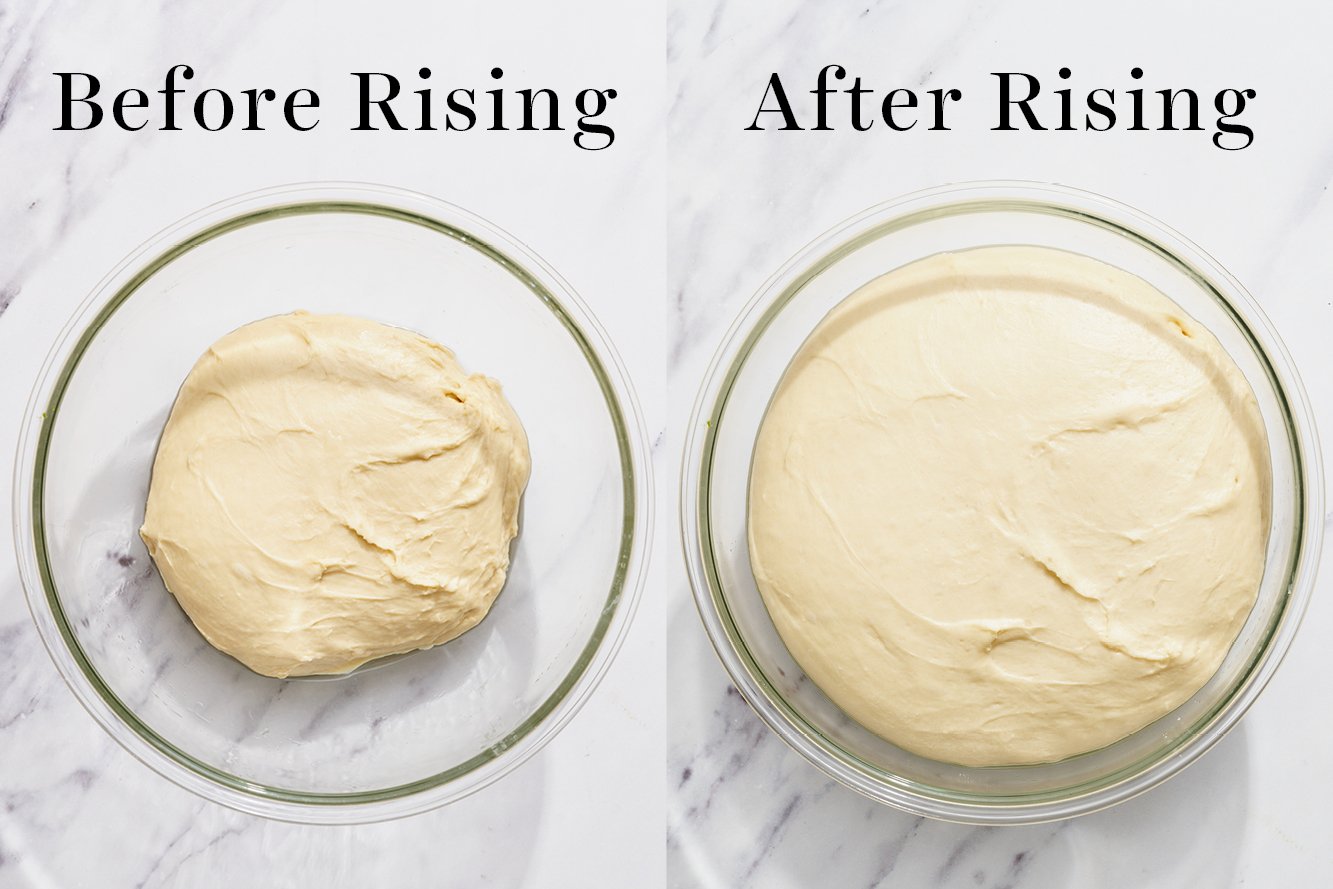
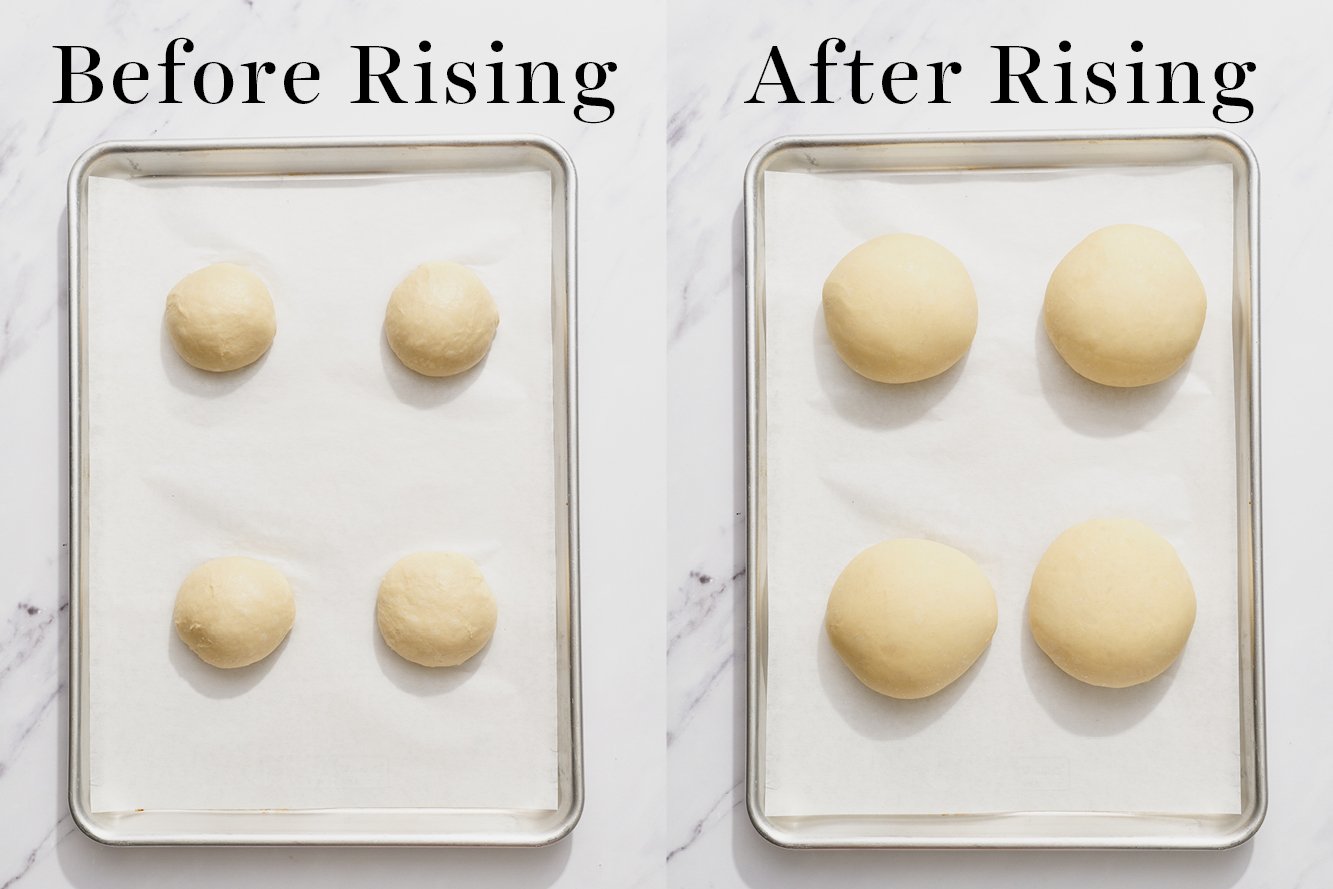
How To Tell If You Have Over-Proofed Your Hamburger Buns
This can happen easily if your kitchen is very hot, or if you’re super busy and forget to check on the buns. If your buns have over-proofed, they will likely deflate while egg washing, or look deflated once baking. Over-proofed buns will look a little sad, but they should still taste fine.
Do I Have to Use Bread Flour For These Burger Buns? Can I Use Just All-Purpose Flour Instead?
For best results, I really recommend sticking with both bread and all-purpose flour as written. Bread flour contains a higher percentage of protein than all-purpose flour, which helps develop the gluten in the dough. Gluten is the backbone of any bread’s structure and since we are adding ingredients that prohibit gluten development (butter, egg, sugar), this dough needs that additional protein to develop its structure and prevent them from falling flat. When testing this recipe, I found that making the buns with all bread flour resulted in buns that were too tall and stiff. The addition of all-purpose flour balances this out.
Can I Use Whole Wheat Flour For These Burger Buns?
Check out my Whole Wheat Burger Buns recipe, I’ve made the adjustments so you don’t have to!
Can I Knead This Dough By Hand Without A Mixer?
Yes, but it’ll require some elbow grease and patience. Many readers have successfully kneaded by hand, but this dough is on the sticky side and requires a lot of kneading to develop that gluten. If you’ve got a mixer, it’s worth lugging out of the cabinet. If you don’t have a stand mixer, check out my How to Knead Dough article here.
How To Make Fluffy Bread
- Avoid adding too much extra flour to the dough. Since this dough is enriched and takes quite a while to come together, it’ll look really wet and sticky. Your instinct might be to add extra flour; however, any extra flour will create a denser, tougher bun instead of the light, fluffy, brioche-style bun we want.
- It’s better to be sticky than dense. The sticky factor will continue to lessen as the dough is kneaded and especially as it rises. If the dough doesn’t seem like it’s coming together at all, let it rest for about 10 minutes before continuing kneading to relax the gluten.
How to Shape Burger Buns
Knowing how to properly shape burger buns, as well as bread rolls, makes the difference between sad flat buns and beautifully round tall ones that look professional. Just take a look at how this recipe looks when properly shaped vs. improperly shaped:
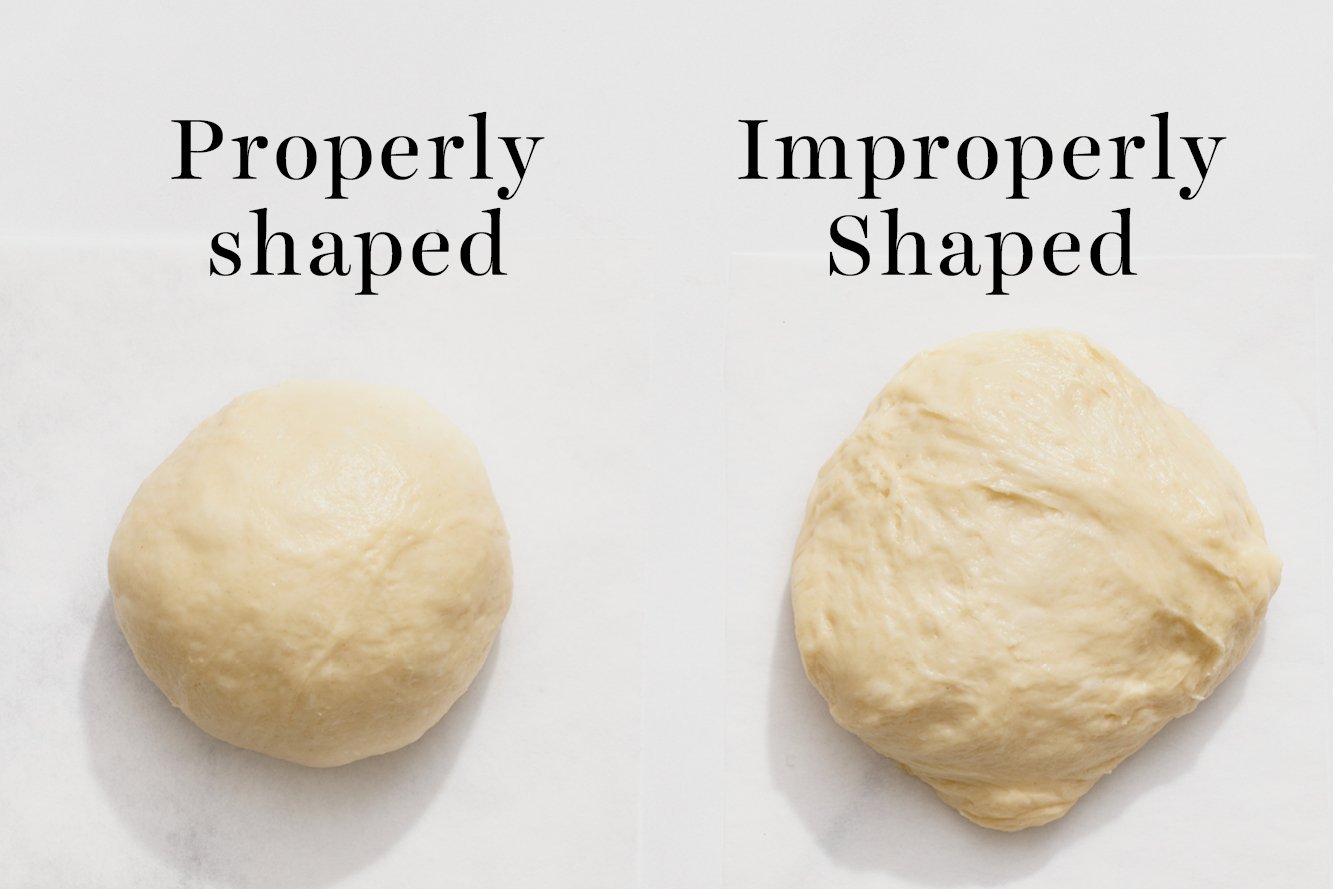
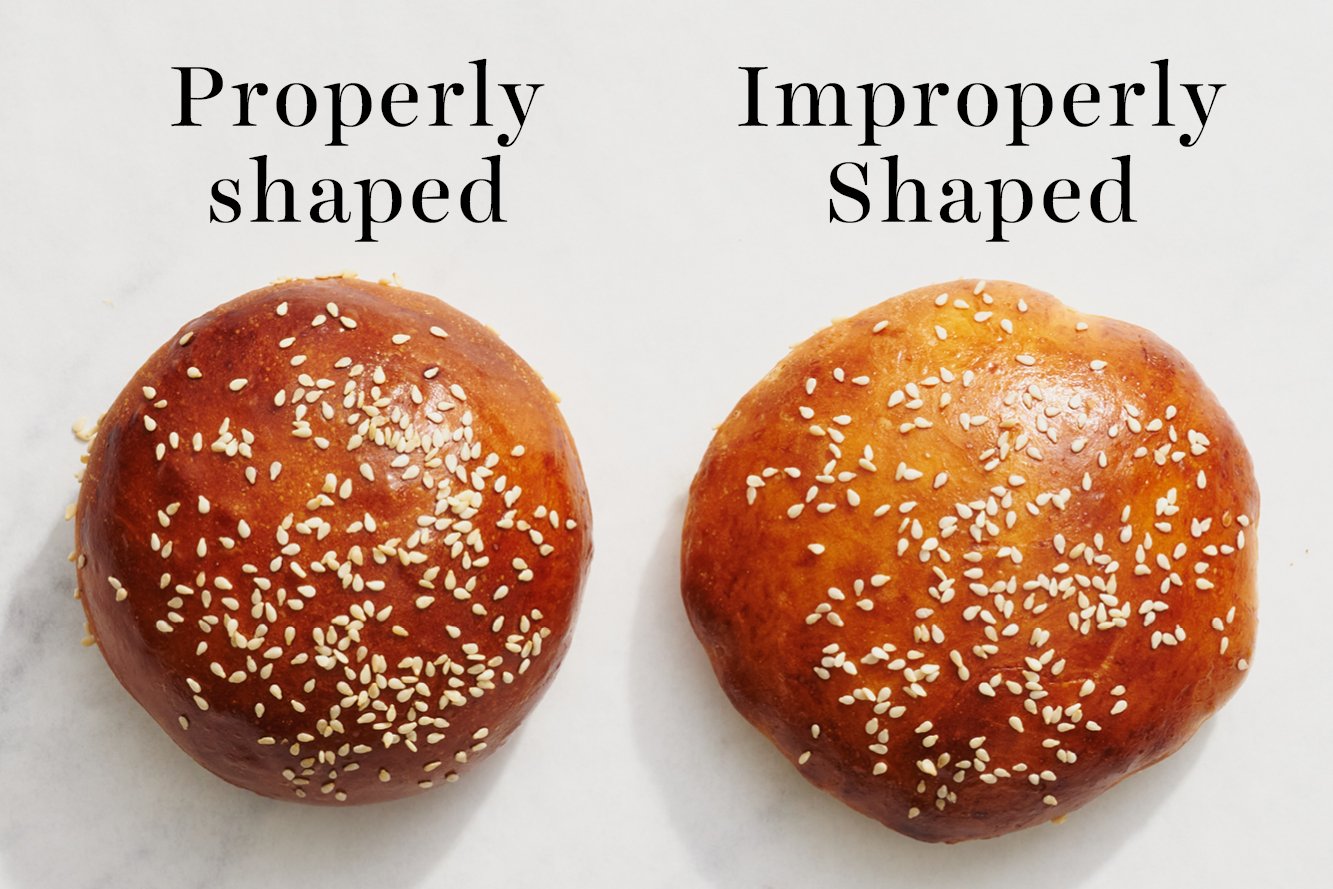
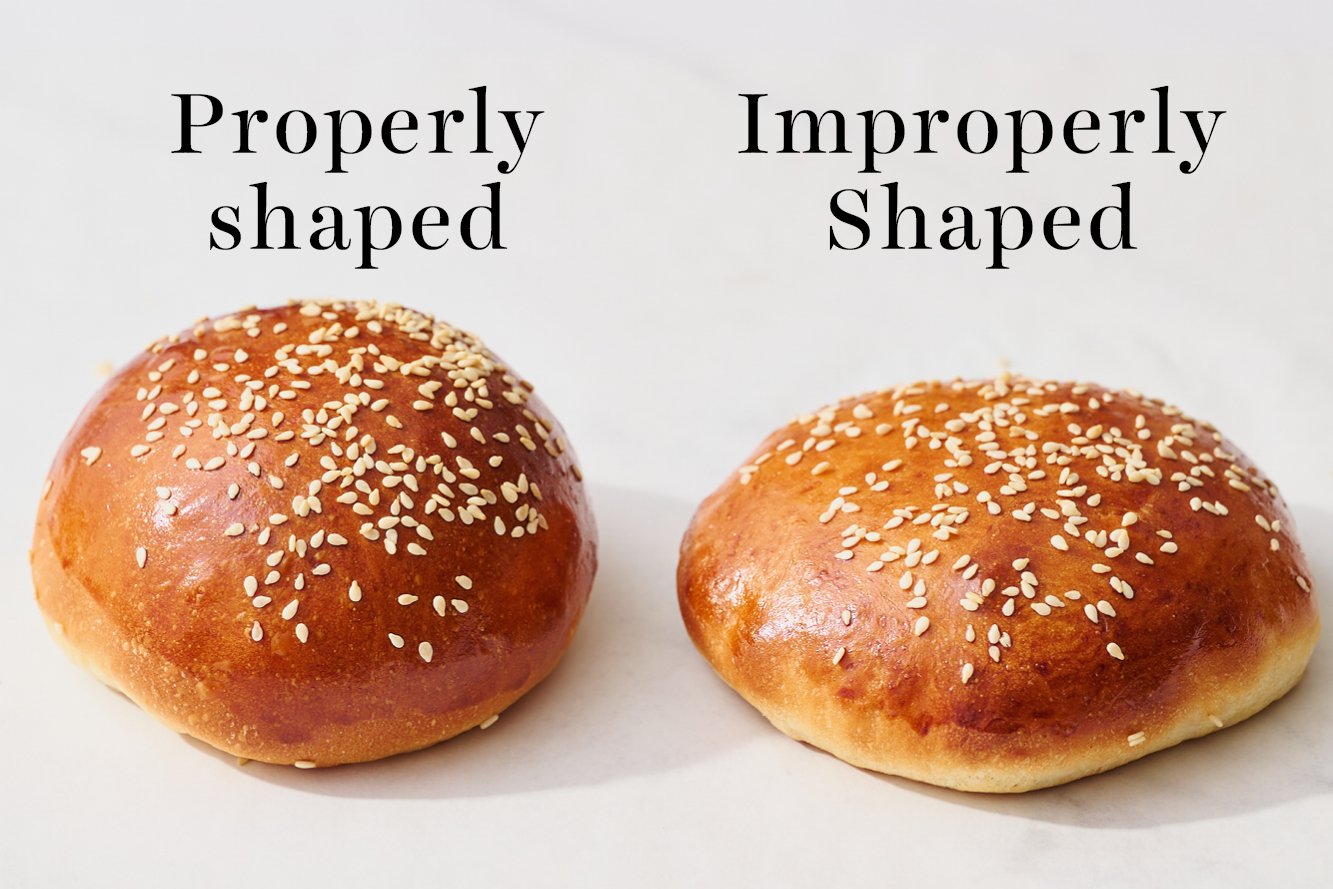
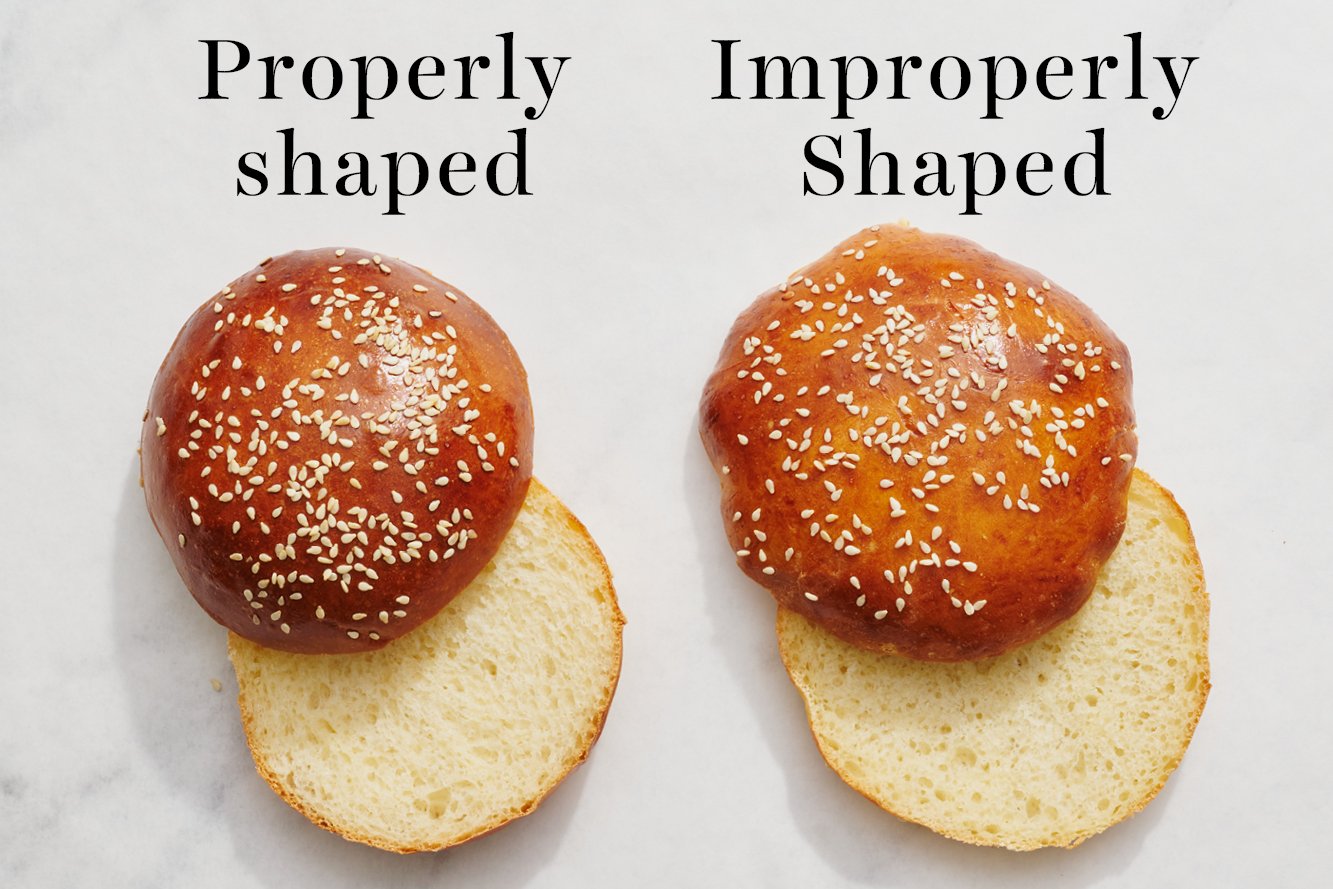
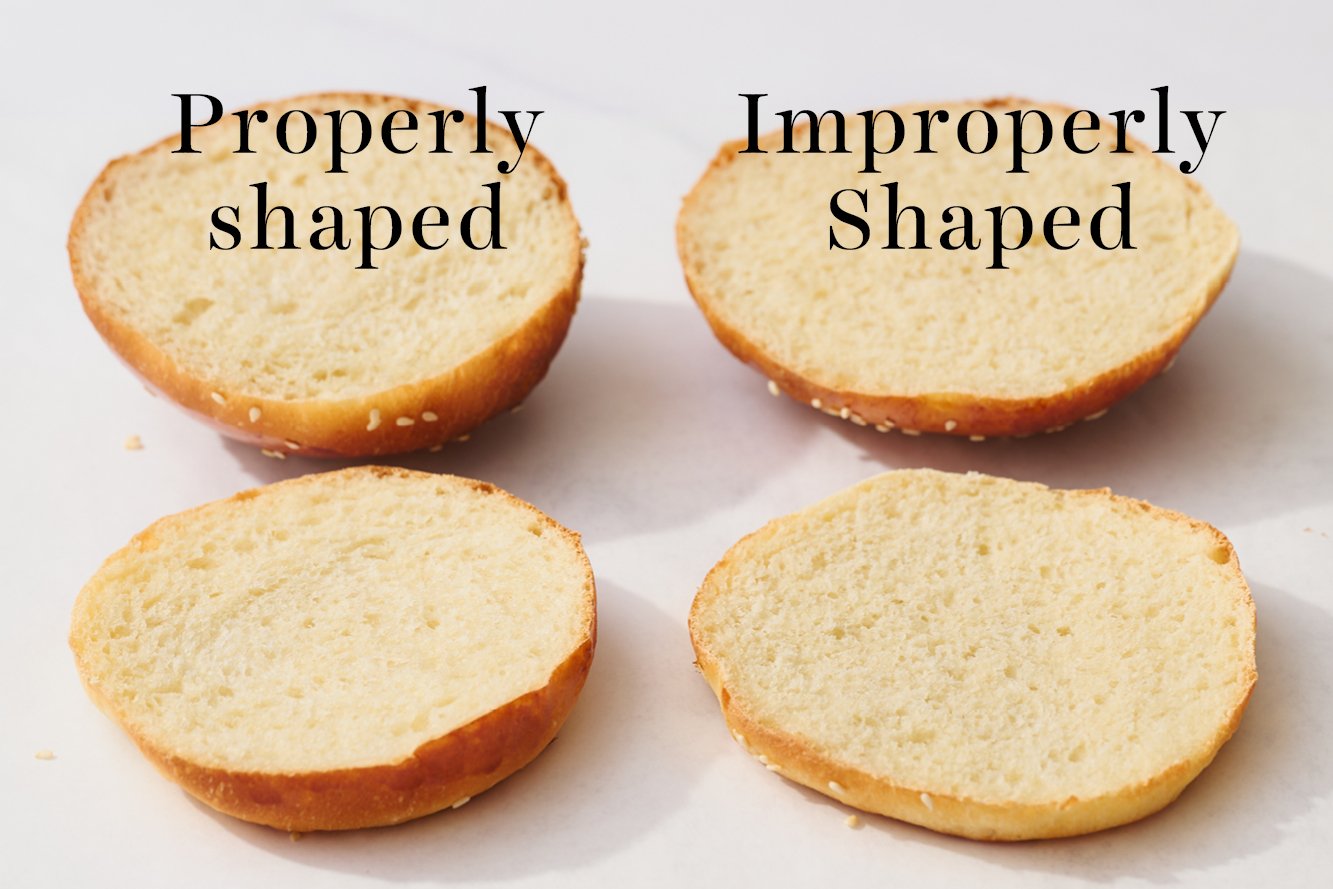
- Deflate the dough. Once the dough is risen, press it down to deflate it slightly.
- Place on work surface. Place the dough onto a clean surface (not a floured surface).
- Divide the dough. Use a bench scraper to section the dough into 8 equal pieces. Feel free to eyeball it, but if you’re a perfectionist like me, weigh the entire mass of dough, divide that number by 8, then portion each piece perfectly by weight.
- Shape into rounds. As you’re shaping each piece into a round, make sure to tug on pieces of dough to bring towards a central point. Pinch those pieces together to create a very tight, taught ball of dough. Roll the ball on your work surface to even out. This will help the buns rise beautifully.
- Don’t flour the work surface. Don’t flour your work surface when shaping the buns because you want some resistance to roll them into taut balls.
- Tip if the dough is too sticky to handle easily: Very lightly oil or flour your hands – just enough that you can handle the dough without it sticking to your hands.
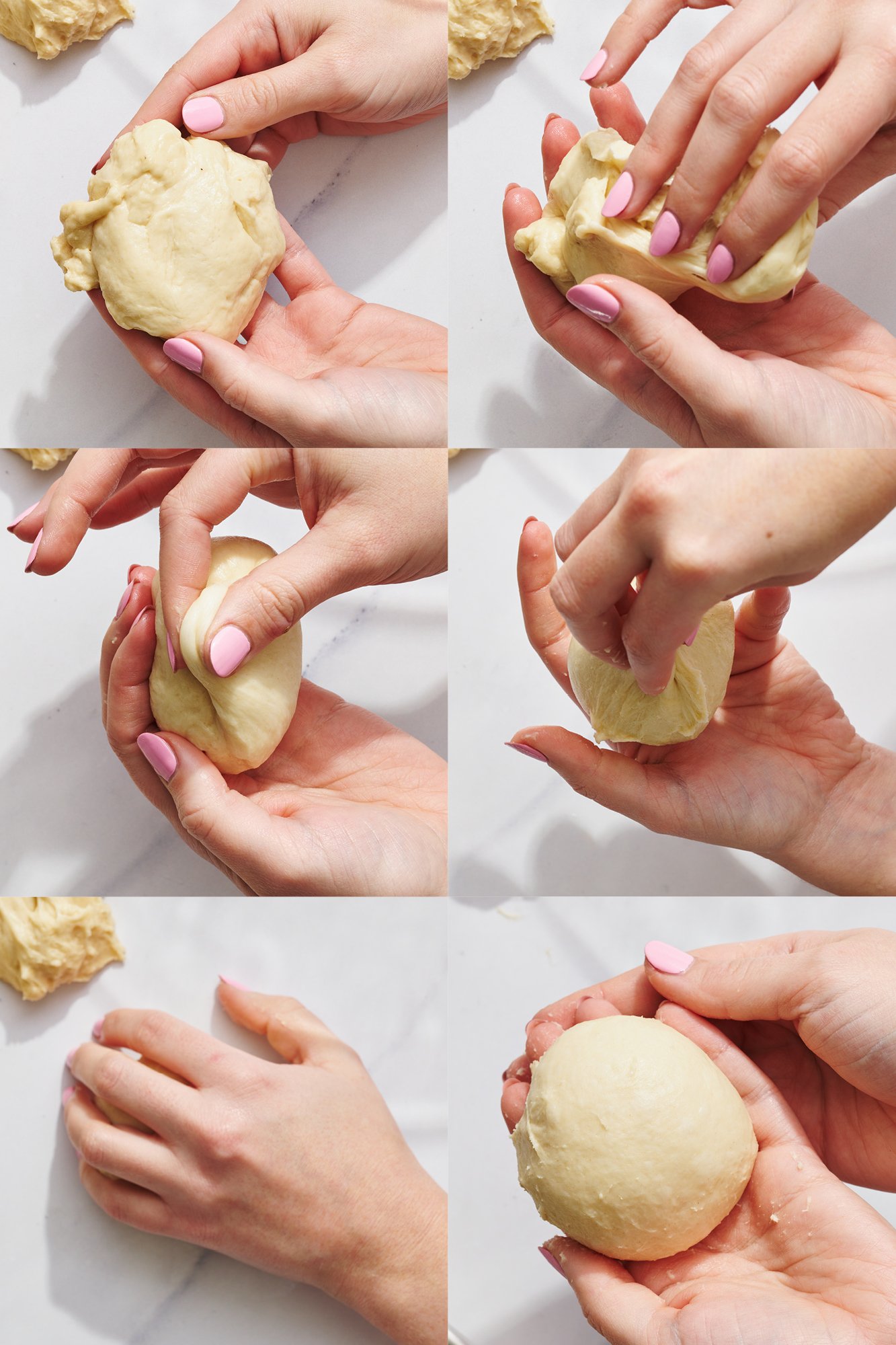
Can This Recipe Be Made Into Sliders?
Yes! Simply divide the dough into 15 and place in a 9×13-inch metal pan. Bake at 400°F for 15-20 minutes, rotating halfway through baking, until the tops are golden brown.
How Do I Make These Burger Buns Ahead Of Time?
Most yeasted doughs can be made ahead of time. I recommend preparing the buns through the first rise, dividing and shaping the rolls, letting them rise for about 20 minutes, then covering them well with plastic wrap and refrigerating for up to 24 hours. Chilling the dough like this stunts the rising, preventing the dough from rising further. Remove from the fridge and allow to sit at room temperature for at least another hour. If the buns haven’t doubled in size yet, continue to leave the buns at room temperature until doubled, before baking as the recipe directs.
To make these hamburger buns further in advance, freeze the unbaked rolls after their first rise and shaping. Place the rolls in a baking pan, cover tightly with plastic wrap, and store in an airtight container in the freezer for up to 2 months. Loosen the plastic wrap and thaw to room temperature. Let rise until an indentation made with your finger into the dough remains and proceed with the recipe as written.
How to Store Burger Buns
Store baked, cooled burger buns in an airtight container for up to two days at room temperature.
How to Freeze Hamburger Buns
Store in an airtight container in the freezer for up to two months. Let defrost at room temperature or in the microwave before toasting the buns in your toaster or on your griddle or grill.
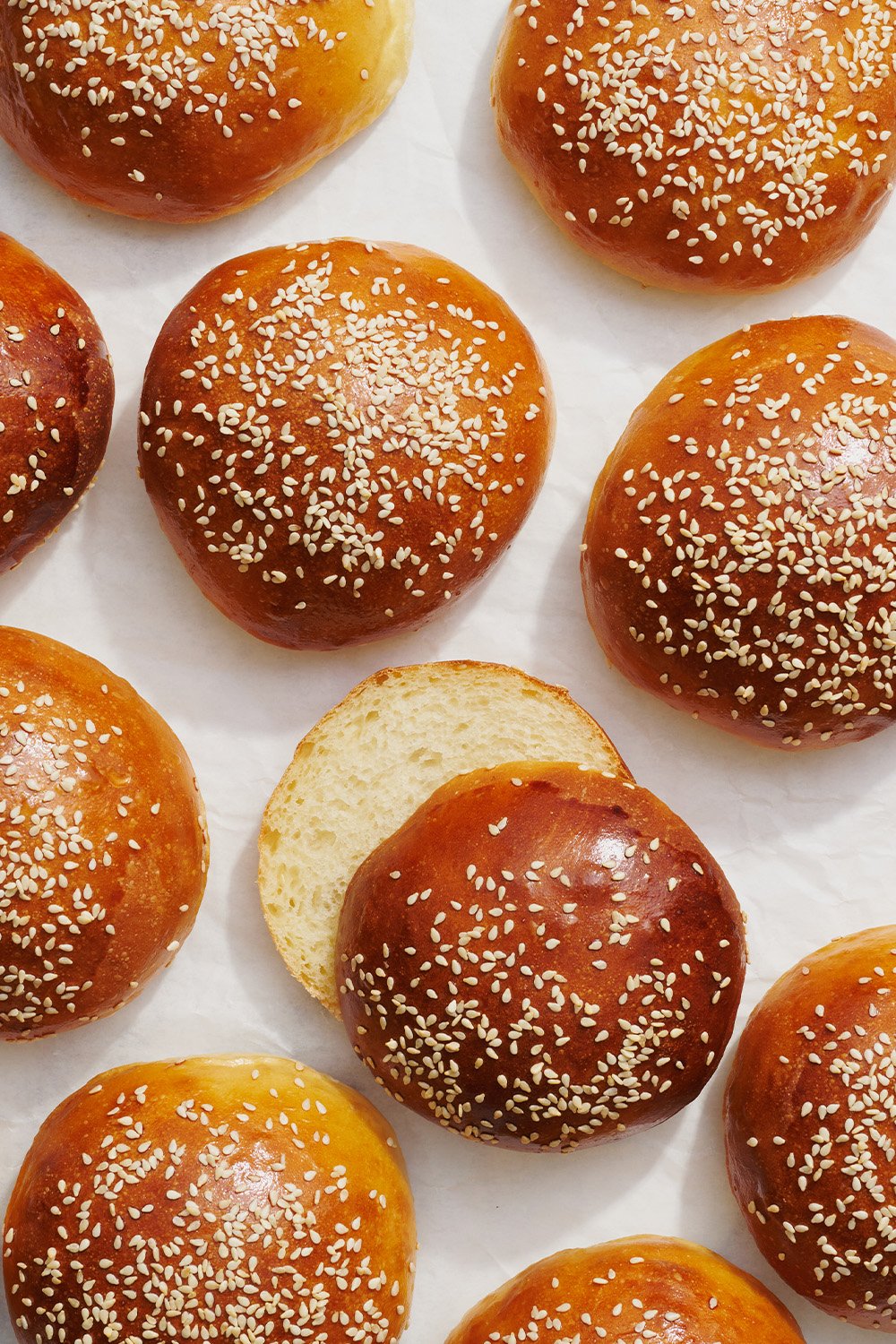
More Recipes You’ll Love:

Become a Baking Genius!
Sign up for our free email newsletter for NEW recipes & baking science secrets.
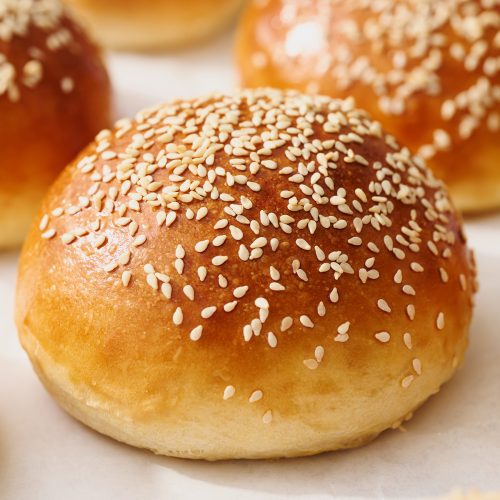
Burger Buns
Ingredients
- 3 tablespoons (44 grams) warm whole milk, between 105° and 120°F
- 1 cup (237 grams) warm water, between 105° and 120°F
- 2 ¼ teaspoons (1 packet, 8 grams)
instant yeast 1 - 2 ½ tablespoons (31 grams) granulated sugar
- 1 large egg, at room temperature, slighten beaten
- 3 cups (382 grams) – 3 cups + 3 tablespoons (406 grams)
bread flour, approximately2 (do not substitute this) - ⅓ cup (43 grams) all-purpose flour
- 1 ½ teaspoons fine salt
- 3 tablespoons (43 grams) unsalted butter, at room temperature
For topping:
- 1 large egg beaten with 1 tablespoon water
Sesame seeds , optional
Instructions
- In the bowl of a stand mixer fitted with the dough hook, combine the milk, water, yeast1, sugar, and egg.
- Add the flour to the bowl, and mix until incorporated. Mix in the salt and butter. Knead on medium-low speed for about 10 minutes, or until the dough comes together into a soft yet tacky dough (should not be unbearably sticky). Avoid adding too much extra flour because it will create tough buns; however, depending on climate and humidity, you may need to add up to an additional 3 tablespoons (24 grams) of flour. It’s better to be sticky than dense, I promise!
- Transfer the dough to a lightly oiled bowl. Cover with plastic wrap and let rise in a warm place until doubled in size, about 1 to 2 hours3.
- Line two baking sheets with parchment paper4. Divide the dough into 8 equal parts. Gently roll each portion of dough into a ball and place four to a baking sheet, 2 to 3 inches apart. If your dough is unbearably sticky, lightly grease your hands with cooking spray or lightly dust the tops of each dough ball with flour before rolling. Cover with a clean towel and let rise again until puffy and almost doubled, 1 to 1 1/2 hours.
- Preheat the oven to 400°F. Brush the tops of the buns lightly with the egg wash. Sprinkle with sesame seeds. Bake the buns about 15 minutes, rotating halfway through baking, until the tops are golden brown. Transfer to a rack to cool completely.
- Serve or store in an airtight container in the freezer for up to one month. Let defrost at room temperature before reheating in a 350°F oven until warmed or toasting.
Recipe Notes
This recipe was originally published in 2015 and updated in 2023 with new photos and recipe improvements. Photos by Joanie Simon.


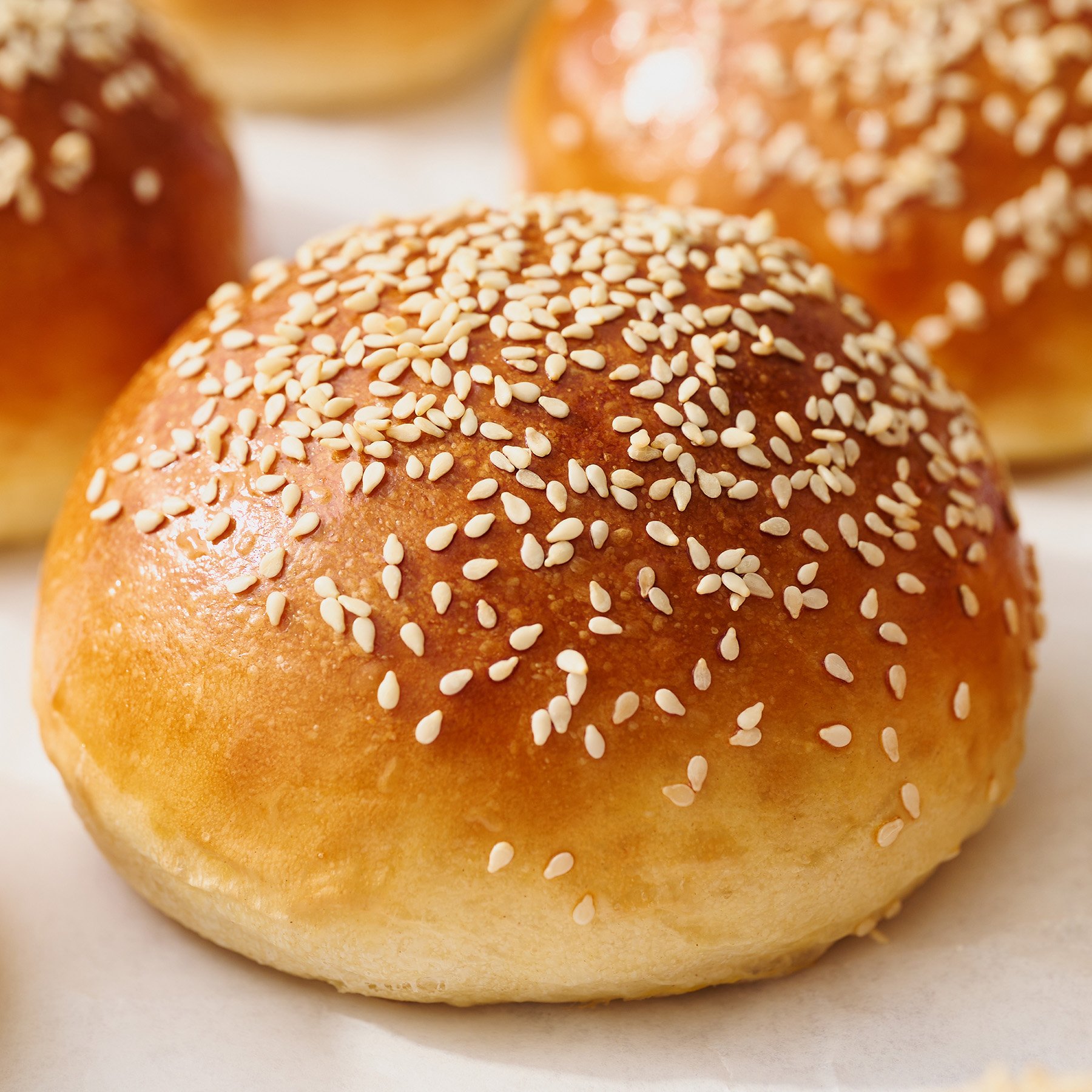
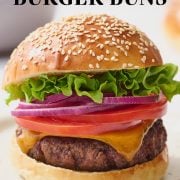

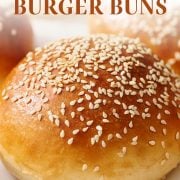
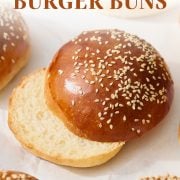
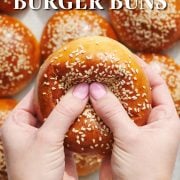
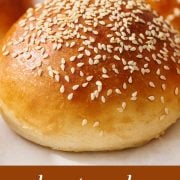
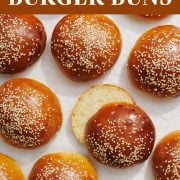
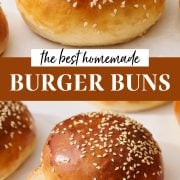
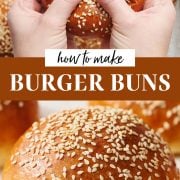

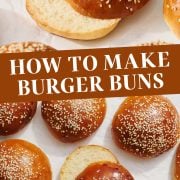


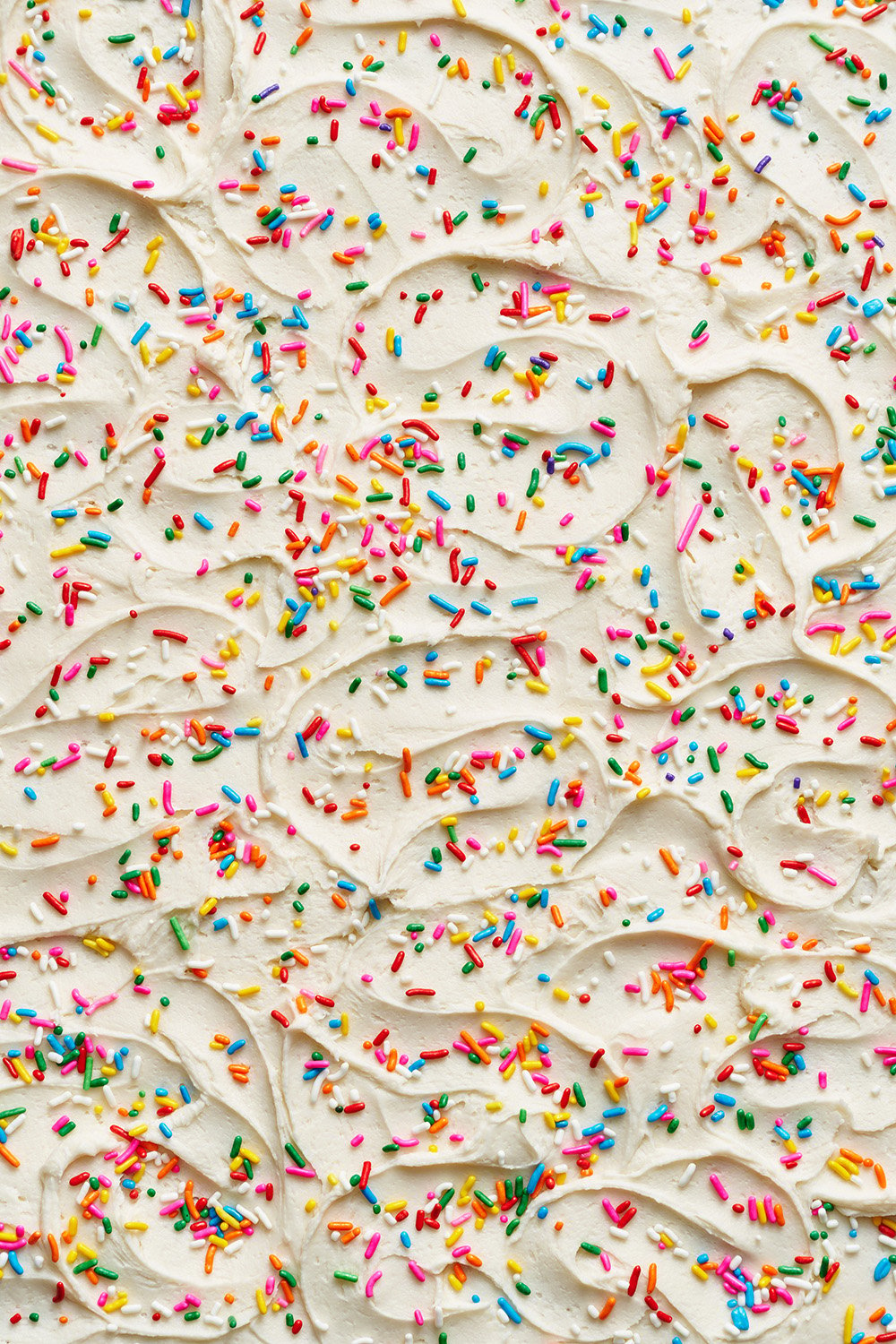
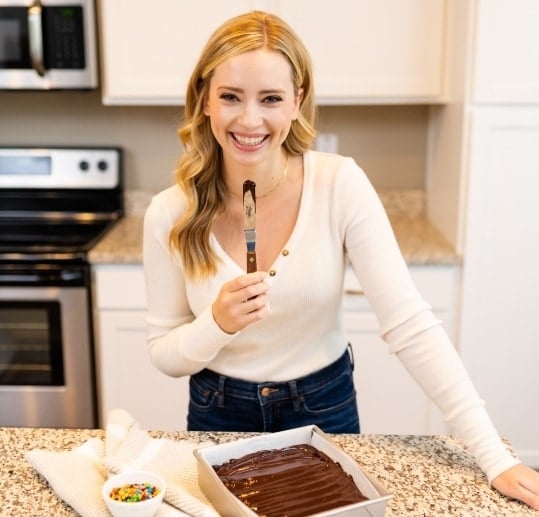

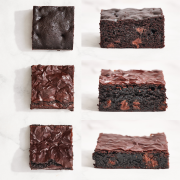
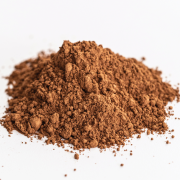
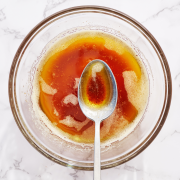
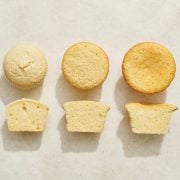
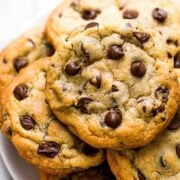
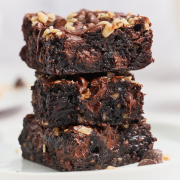
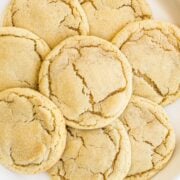









Mine came out light and so fluffy! My dough was very much on the sticky side because I accidentally melted my butter but I didn’t add much more flour (only +1 Tbsp), I just put some olive oil on my hands to shape them and that worked well.
Yo just tried it out. Super yummy but a little dense. I’m thinking of the next time letting them proof either in individual balls or a second time. Oh and not much of a baker but they worked very well for black forest burgers! Sorry no picture they went fast!
I’ve made this multiple times now and even though it tastes good, it keeps coming out very dense. My husband, who is a baker, helped me one time ro make them and they still turned out to heavy. Not sure why but it’s been enough times that I have to move on from this recipe.
The biggest key for making these burger buns fluffy and not dense is ensuring that you don’t add too much flour (a digital scale is helpful here!). This recipe includes a range of bread flour (3 – 3 cups + 3 tablespoons) because the amount you’ll need completely depends on your kitchen climate. Please check the recipe notes for more details. The dough will be a bit sticky before its first rise, so be careful to not add more flour than necessary. As the recipe notes, if the dough is sticking too much to your hands while you roll them into balls, it’s helpful to grease your hands with a bit of cooking spray rather than adding more flour. These buns are absolute heaven when the correct amount of flour is added, so I really encourage you to give it another try. Please let me know if I can help further!
Lovely recipe! Clear instructions and easy to follow. Family loved the results! Also made version with gluten free bread flour and although smaller, they were still a great texture and tasted great. Thank you for sharing!!!!!
Hi – Looking forward to trying these!
In your recipe you have 3 cups – 3 cups + 3 Tablespoon bread flour….how much bread flour does it need? Thanks for your help!
Hi Joanne! Please check out #2 in the Recipe Notes for more details. We include a range of flour because it will depend on your kitchen climate/humidity as to how much is needed.
I do not have a mixer and I am willing to do it by hand. Is it necessary to do it with a mixer?
The kneading is also important!
Mine turned out beautiful! Maybe proof the dough a bit longer and leave them pretty round before the last proofing, Best of luck and well worth trying again, Kimberly!
O have used this recipe time and time again for our family diners and it is hands down the best buns recipe I’ve ever made (and I’ve tried a lot!) thanks so much for sharing it with us!
Tried it today but it flattened after egg washing although i proofed it for less time than asked for 🙁 Any recommendations for changes where humidity is 90% and room temperature is 32degC? Would really like to get this to work!
Looks like your buns might be overproofed. Mine proof in way less time than the recipe says for the first rise, about 1/2 hour. You can kind of tell if it doubles, than it’s ready shape. Hope this helps!
Thanks! I proofed it for about 45 mins, will look at doing it for less. It was also incredibly hard to shape (did not look like the picture) so I might try with a lot more flour.
You’re welcome! Yes, mine were a little hard to shape so I usually use a lot of flour when I shape them and pull the sides into the middle to make it a ball. I think adding it that way when shaping them is a little bit better than adding too much in the original dough because then they will be on the tougher side. (I do add more flour than the recipe when I made it, but I still make sure it’s pretty sticky.)
Hi Kimberly! If your buns flattened after the egg wash, it does mean that they were proofed for too long. Next time, take a picture of your dough before the first rise, then check your dough after 30 minutes and compare it with your picture. With how warm your room temperature is, you’ll need less time than our listed 1-2 hours. Same thing for the second rise, it may only take you 30 minutes, when it took us 1-1 1/2 hours. Taking a picture of my dough has always helped me guarantee I don’t overproof it, so hopefully it helps you too! Let me know how your next attempt goes. Good luck!